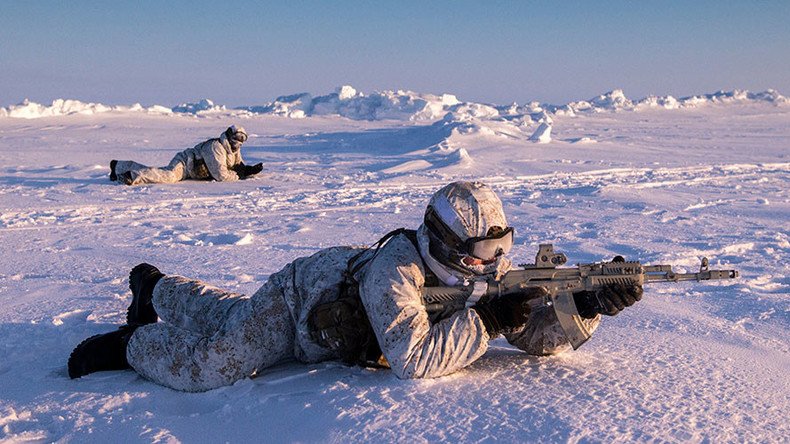Defense Ministry to complete works to seal off Russia’s Arctic borders by 2017

Russia has almost completed construction works on new defense installations on islands in the Arctic, and the military expects to be operating in the new bases before the end of the year, according to Russian media.
Unnamed sources in the Defense Ministry told popular daily newspaper Izvestia that by mid-summer construction workers will have completed barracks and sentry posts on the Novaya Zemlya and Severnaya Zemlya archipelagoes as well as on the Alexandra, Franz-Joseph and Vrangel islands.
The source emphasized that establishing Russia’s military presence in the Arctic was the main priority for the Defense Ministry.
READ MORE: North Pole-2015: Russia launches drifting Arctic station
The paper also reported that the military is paying particular attention to environmental protection during the construction works and in view of future operations of the sites. It has also undertaken efforts to repair the damage inflicted on the fragile Arctic ecology during the Soviet era.
In 2015 workers cleared garbage from about 78 hectares of land, collecting about 4,300 tons of scrap metal in the process. This year they expect to gather about 4,600 tons more, and about 4,100 tons will be transported to the mainland and recycled, the source told reporters.
The deputy director of Russia’s Geography Institute, Arkady Tishkov, said the Defense Ministry was not the only Russian organization heavily involved in the development of the Arctic regions of the country. The Emergencies Ministry, the State Meteorological Service and the Russian Academy of Sciences were working on a joint infrastructure that would solve transport and logistical problems, he said.
In 2014 Defense Minister Sergey Shoigu presented a major plan to cover Russia’s northern borders with a network of military bases and radar stations as part of the country's strategy in the Arctic. “This year we will have total radar coverage and in 2015 we will be almost fully prepared to meet unwelcome guests from the east and the north,” the minister said.
The plan also provides for the building of 13 airfields, one land test range for the Air Force, 10 radar sites, and direction centers.
In March 2015 the Russian military held major exercises on the orders of President Vladimir Putin, seeking to test its readiness to counter challenges in the country’s north and particularly in the Arctic. The drills involved about 38,000 troops, 41 ships, 15 submarines and 110 aircraft.
READ MORE: Russian army beefs up Artic presence over Western threat
“New military challenges and threats demand further boosting of the military capabilities of the armed forces and special attention is being paid to the condition of the newly-set-up strategic command in the north,” Shoigu told reporters as he announced the start of the training. Shortly beforehand, Shoigu had warned that Russia would consider protecting its national interests in the Arctic through military means if necessary.
“The constant military presence in the Arctic and the possibility to protect the state’s interests by military means are regarded as an integral part of the general policy to guarantee national security,” he said.













